Speed reducers are mechanical devices found in the housing of almost all-mechanical equipment. They are important components that give operators ability to regulate the output based on different needs. Contrary to what their name suggests, speed reducers do not just reduce speed. Read More…
We offer premium speed reducers and motion control components. These deluxe parts are designed for a wide range of purposes and our engineers are willing to assist you with determining the best speed reducer.

Cleveland Gear Co. has specialized in speed control technology including a variety of quality manufactured speed reducers since 1912. We have successfully developed speed reducers for material handling, mineral processing, and more. You will find that our products have uncompromising quality, making all others less than the best. We will fulfill your exact requirements and that's what continues...
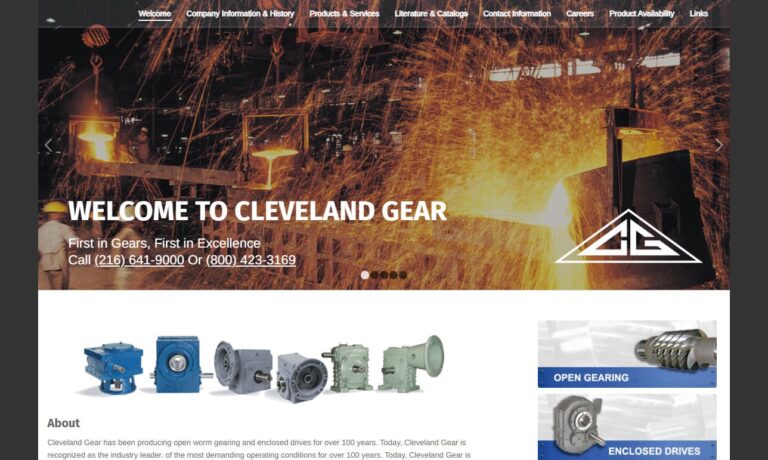
At JHFOSTER, we pride ourselves on our commitment to excellence in engineering and innovation. Our company specializes in designing and manufacturing high-performance speed reducers that cater to a wide range of industries. Our products are crafted with precision and reliability in mind, ensuring they meet the rigorous demands of modern industrial applications.

Apex Dynamics, Inc. is a worldwide leader in manufacturing of planetary gearboxes. Based on more than twenty years of accumulated manufacturing and marketing experience, plus the highest level of technical production capabilities, Apex Dynamics, Inc. designed and built a technically advanced, high speed, low backlash servo application planetary gearbox.

We manufacture highly advanced cyclo reducers which utilize new modifications which allow for 2-speed capabilities. This new technology efficiently provides a high amount of torque at a low speed. Our engineers put a focus on developing the most innovated and cost efficient solutions. We take pride in saying that we are an industry leader that is a global supplier. Feel free to give one of our...

More Speed Reducer Manufacturers
Speed reducers, mechanical devices housed within nearly all mechanical equipment, play a crucial role in enabling operators to adjust output according to diverse requirements. Despite their name, these devices do more than simply decrease speed; they serve dual functions. Firstly, they lower rotational speed from the source to more manageable levels. Secondly, through the coordinated action of gears, they simultaneously amplify torque, facilitating operations such as repair, milling, and various other processes.
These versatile components find extensive use across multiple industries, including aerospace, automotive, material handling, construction, food and beverage processing, recreation, oil and gas, and textiles. They are integral to numerous specific applications such as conveyors, pumps, printing presses, compressors, automation equipment, generators, robotics, metallurgy, and mining and construction machinery.
History
In 1206 AD, Ismail al-Jazari, a Muslim polymath, became the first person known to document a description resembling a speed reducer. His book, The Book of Knowledge of Ingenious Mechanical Devices, discusses various gearbox arrangements.
In the aftermath, gearboxes fell into obscurity until the 19th century dawned. The resurgence began in 1817 with the innovation by Watt & Boulton Engine, a British manufacturing and engineering firm, which introduced a gearbox featuring two gears and a rotational speed governor. Nearly six decades later, in 1881, engineers at the French company de Dion-Bouton revived gearbox production for installation in steam-powered cars. Just seven years after that, Emile Levassor and Louis-Rene Panhard, also French, devised the gear and drive shaft assembly to enhance mechanical transmission power.
In 1904, the Sturtevant brothers, a pair of inventive Americans, introduced what they termed the “horseless carriage gearbox.” This invention was, in essence, an early automatic power transmission speed reducer. However, due to insufficient metal technology at the time, their gearboxes frequently failed, unable to manage gear ratio shifts effectively. Then, in 1908, Henry Ford launched his iconic Model T automobile, which utilized planetary gearbox speed reducers for shifting gears, marking a significant advancement in automotive technology.
In the early 20th century, manufacturers concentrated primarily on advancing speed reducer gears tailored for the automotive sector. As technology progressed, this emphasis shifted. Nowadays, manufacturers craft speed reducers in diverse sizes for various uses, spanning from advanced robotics to traditional bottling and beverage operations. Modern speed reducers showcase enhanced precision, energy efficiency, expanded reduction ratios, intricate design capabilities, and versatile applications. Looking ahead, engineers are poised to further refine these attributes in the coming years.
Design
Speed reducers serve a range of devices, each tailored to specific loads and torque capacities, all crafted from robust, durable metals such as steel.
Production
Manufacturers begin crafting speed reducers by fabricating gears and gear shafts. Gears are shaped through cutting and forming methods such as blanking, broaching, form milling, or hobbing, while gear shafts are produced using metal forming techniques like forging, extrusion, casting, and similar processes.
After creating the gears and gear shafts, manufacturers proceed to manufacture the gear housings. Typically, these housings are crafted using CNC die casting equipment.
They begin by assembling the gear motors, comprising various components such as an electric power source (AC or DC). These components are then combined to create a single speed reducer. Finally, manufacturers apply lubrication to enhance the speed reducer’s durability against heat and friction, guarding against abrasion and corrosion.
Materials
Manufacturers produce speed reducers using steel, hardened steel, or plastic. Steels are favored for their durability, abrasion resistance, and corrosion resistance. Plastic serves as an excellent alternative to metal, particularly when customers seek to minimize weight or cost. Additionally, plastic speed reducers offer advantages such as smooth operation at low speeds and resilience against dirt.
Considerations and Customization
Manufacturers designing speed reducers evaluate various application needs and specifications. These include factors like gear pitch, output gear requirements, input and output torque capacities, and load limits. These considerations guide the selection of product features, such as the reduction ratio (the ratio of input speed to output speed), dimensions, and the configuration of gears.
To achieve peak performance tailored to your specific application, manufacturers offer a range of customization options for your speed reducer. Alongside adjusting its size, reduction ratio, and gear configuration, they can enhance it with additional speed control features such as sheaves, v-belts, sprockets, or chain drives.
Features
In a speed reducer, numerous key features collaborate to ensure smooth operation. Our input shaft initially receives power, usually from an electric motor or engine. Meanwhile, the output shaft delivers reduced speed and heightened torque to the driven system. Gears stand as pivotal elements in this process, tasked with reducing speed and boosting torque. They vary in size and design, with a smaller gear (the pinion) driving a larger one to achieve the desired speed reduction.
The gearbox serves as a protective enclosure for gears, offering essential support and lubrication to ensure seamless operation. It comes in various designs like spur, helical, worm, or planetary, each tailored for specific uses. Planetary gear systems, known for their compact size and robust torque delivery, excel in demanding applications. Worm gears, meanwhile, are prized for their ability to achieve high reduction ratios effectively. In a gear motor, the electric motor and gearbox merge into a unified unit, streamlining installation and maintenance efforts. The motor initiates power, while the gearbox lowers its speed and boosts torque, preparing it for transmission to the output shaft.
In addition to these core features, speed reducers can integrate various other components tailored to specific applications and needs. Some models incorporate extra bearings that support shafts, ensuring smooth rotation and minimizing friction. Essential lubrication systems, such as oil baths or grease fittings, are crucial for optimal gear performance and longevity. Advanced versions may also feature sensors to monitor temperature, vibration, or load, facilitating condition monitoring and preemptive maintenance. By harmonizing input and output shafts, gears, gearboxes, and potentially additional components, speed reducers adeptly transmit power at controlled speeds and heightened torque, catering effectively to diverse industrial demands.
Types
At times, broader speed reducers are commonly interchanged, despite their distinctions. These categories encompass gear reducers, gear drives, gearboxes, and gearmotors.
Gear reducers excel in managing intense shock loads, optimizing power efficiency, and compacting machinery size. They boast benefits such as low energy consumption, lightweight design, smooth startup, and robust transmission torque.
Gear drives amplify the torque of a variable speed power source or achieve variable output speeds from a constant speed power source. They accomplish this by utilizing gear ratios to alter the direction, torque, and rotational speed of shafts. (Gear ratios define the relationship between the input speed of a gearmotor and the output speed of a gear head.)
Gear boxes, with their input and output shafts and an array of gears, specialize in reducing motor speed. This is achieved by lowering the output speed while concurrently increasing torque. These devices are also referred to as gearbox speed reducers or gearheads.
Gearmotors collaborate with gear boxes or gear heads to either amplify or reduce motor speed. They harness electrical energy from AC or DC motors and convert it into mechanical energy, thereby gaining control over speed variations.
Besides generalized motors, there are various specialized speed reducers designed to cater to specific needs. These include shaft-mounted speed reducers, cyclo reducers, planetary gearboxes, parallel shaft speed reducers, inline gear reducers, right-angle gearboxes, variable speed reducers, worm gearboxes, and additional right-angle gearboxes.
Shaft-mounted speed reducers, also known as shaft mount reducers, are directly mounted onto the drive shaft. Their compact design eliminates the need for a foundation or coupling.
Cyclo reducers, or cycloidal speed reducers, reduce input shaft speed using rolling elements set at a specific ratio. These reducers, which encompass various types like RV gearboxes, feature a rotating circular disc that operates off-center.
Planetary gearboxes derive their name from their construction. Comprising a sun gear, planet gears, and a ring gear, these gearboxes function by orbiting the sun gear. This orbital motion of the planet gears enables a range of reduction ratios, effectively adjusting the torque or speed of a rotating input shaft.
Helical gear reducers, also known as helical speed reducers, utilize helical gears with shafts positioned on parallel axes and teeth cut along helical paths. These gearboxes provide smooth and quiet gear ratio adjustments, making them ideal for high-speed applications.
Bevel gear reducers utilize intersecting shafts, making them versatile across various applications, from automobiles to printing presses.
Parallel shaft speed reducers employ gears to decrease speed. They derive their name from the alignment of their shaft and motor on parallel planes. These reducers are ideal for compact environments due to their slim profile.
Inline gear reducers reduce the incoming speed, direction, or torque of larger systems, aiming to assist other system components in managing power and functioning efficiently. They achieve this by utilizing gear ratios that align along the centerline of the input shaft, thereby synchronizing the output shaft with the input shaft.
Variable speed reducers, known as drives, manage the rotational velocity of electric motors while optimizing energy usage. They come in various types—mechanical, hydraulic, electronic, or electromechanical—tailored to specific applications. These reducers often collaborate with speed variators, enabling seamless gear ratio adjustments. They are compatible with both direct current (DC) and alternating current (AC) motors, with a predominant preference for the latter in most cases.
Worm gearboxes, alternatively called worm speed reducers or worm gear reducers, embody compact design principles. They find application in scenarios necessitating low horsepower, while maintaining exceptional shock tolerance and achieving high gear ratios.
Right angle gearboxes are impressive speed reducers with efficiency levels reaching up to 98%. The term “right angle” refers to the configuration of the input shafts, which are perpendicular to the output shafts. These gearboxes are commonly used in glass cutting equipment and printing presses.
Advantages
Speed reducers provide numerous benefits and stand out among similar devices, proving indispensable in diverse industrial and mechanical setups. One key advantage lies in their capacity to transform high-speed, low-torque power sources—such as electric motors or engines—into low-speed, high-torque outputs tailored for robust applications. This amplification of torque empowers speed reducers to effectively manage substantial loads, rendering them optimal for machinery such as conveyor belts, cranes, and various industrial equipment.
They offer a significant advantage due to their versatility and adaptability. They are available in a variety of designs and configurations such as spur, helical, worm, and planetary gear systems. This variety allows engineers to choose the most suitable type for specific applications. Moreover, they can achieve a wide range of reduction ratios, meeting diverse speed requirements across various industries.
Speed reducers not only optimize the connection between input power and output speed but also bolster machinery efficiency. By lowering the rotational speed of a driven system, they refine precision, enhance control, and fortify safety measures. Additionally, they contribute to energy conservation by enabling power sources to function at their peak efficiency levels while meeting performance demands.
They outperform other mechanical devices such as pulleys, belts, or chain drives with superior efficiency and compact design. They efficiently transmit power over extended distances, minimizing losses for smoother, more dependable operation. Enclosed within gearboxes, they safeguard against external elements, curbing wear and extending the system’s lifespan.
In conclusion, speed reducers distinguish themselves with their efficient power conversion, versatility across applications, and capability to optimize machinery performance. Their superior attributes include increased torque output, precise control, energy efficiency, and compact design, rendering them essential components in contemporary industrial processes and mechanical systems.
Accessories
Accessories for speed reducers are essential for their optimal functioning, longevity, and performance. Lubricants are particularly crucial, as they reduce friction and wear between gears and other moving parts within the gearbox. Proper lubrication ensures smooth operation and prevents component damage, thereby enhancing the overall efficiency and lifespan of the speed reducer.
Oil pumps and oil coolers are essential for managing high-power and heavy-duty applications. Oil pumps circulate lubricants through the gearbox, ensuring consistent lubrication and preventing overheating. Meanwhile, oil coolers dissipate the heat generated during operation, keeping the gearbox within safe temperature limits. These accessories are crucial, particularly in applications where speed reducers face continuous or heavy usage.
Belt housings act as sturdy shields for the belts and pulleys within speed reducers. These enclosures protect the critical transmission components from dust, contaminants, and various environmental elements, thereby minimizing the risk of damage or operational hiccups. Additionally, they boost safety by blocking any accidental interactions with the moving parts.
Paddle shifts and shift levers are essential accessories for applications that demand manual control over the speed reducer’s gear ratio. They enable us to change gears effortlessly, offering flexibility to adjust the output speed and torque to meet specific operational requirements.
Slip yokes are crucial elements in speed reducers within drive shaft assemblies. They offer flexibility to manage angular misalignment between the input and output shafts, thereby reducing system stress and enhancing overall reliability.
Gear position displays are essential tools for keeping track of the gear ratio or output speed of the speed reducer. They give operators real-time insights into the system’s performance, helping to ensure efficient control and maintenance.
To determine which accessories are necessary or beneficial for specific speed reducers, we need to consider the application’s requirements and environmental conditions. For heavy-duty applications with continuous use, oil pumps and coolers are essential for managing heat and maintaining lubrication. When manual control over gears is necessary, paddle shifts or shift levers are valuable additions. For drive shaft applications, slip yokes are important for accommodating misalignment. In critical or high-precision operations, gear position displays provide valuable insights into the system’s performance. Selecting the appropriate accessories for a speed reducer involves evaluating the application’s demands, desired functionalities, and the need for enhanced protection and control.
Standards
In the United States, the standards for speed reducers are set by various organizations, with the American National Standards Institute (ANSI) taking a leading role. ANSI, a private non-profit organization, oversees the development of voluntary consensus standards across many industries, including mechanical and industrial equipment like speed reducers. Additionally, the American Gear Manufacturers Association (AGMA) contributes to establishing standards specifically for gear drives and speed reducers.
Standards for speed reducers are crucial for various reasons. Primarily, they ensure the safety and reliability of these devices, safeguarding both operators and nearby equipment. By following established standards, manufacturers can design and produce speed reducers that meet specific performance and quality criteria, thereby minimizing the risk of accidents and failures in industrial applications.
Moreover, standards enhance interoperability and compatibility among various speed reducer components, allowing them to integrate seamlessly into different systems and machinery. This boosts efficiency and versatility, enabling components from different manufacturers to work together harmoniously.
Having well-defined standards helps create a level playing field in the industry. This way, manufacturers can compete on product quality, innovation, and customer service, instead of compromising safety or reliability to cut costs.
Ignoring speed reducer standards can spell trouble for manufacturers. Products that don’t meet these standards can become safety risks, causing accidents, injuries, or equipment damage. These incidents can lead to expensive lawsuits and tarnish the manufacturer’s reputation. Additionally, not adhering to industry standards can bring legal issues, regulatory investigations, or fines from government agencies. In the end, non-compliance can heavily damage a manufacturer’s business, resulting in financial losses and even potential closure.
In the United States, alongside private organizations like the American National Standards Institute (ANSI) and the American Gear Manufacturers Association (AGMA), several government agencies also contribute to setting standards for speed reducers. The Occupational Safety and Health Administration (OSHA), a branch of the U.S. Department of Labor, is one such agency. OSHA establishes and enforces workplace safety standards, including regulations for industrial machinery and equipment like speed reducers. These standards aim to protect workers who operate or work near speed reducers, ensuring the overall safety of the workplace.
The National Electrical Manufacturers Association (NEMA) is an organization that works closely with both private manufacturers and government agencies. NEMA establishes standards for electrical equipment, such as electric motors commonly paired with speed reducers. These standards guarantee the performance, efficiency, and safety of electrical components in speed reducers and various other systems.
Additionally, the U.S. Environmental Protection Agency (EPA) likely has regulations regarding various aspects of speed reducers, particularly concerning energy efficiency and environmental impact. For instance, the EPA’s ENERGY STAR program establishes guidelines for energy-efficient equipment, motivating manufacturers to create energy-saving speed reducers that comply with specific efficiency standards.
In summary, standards for speed reducers in the United States, managed by organizations such as ANSI and AGMA, are essential for ensuring safety, reliability, and efficiency. By adhering to these standards, manufacturers can produce top-quality products that meet industry requirements and perform optimally in diverse applications. Compliance enhances consumer confidence, promotes fair competition, and helps manufacturers avoid legal and financial consequences associated with non-compliance. Moreover, the participation of government agencies in establishing standards alongside private organizations is crucial for forming a thorough regulatory framework. By merging industry expertise from organizations such as ANSI and AGMA with governmental oversight from agencies like OSHA, NEMA, and EPA, we can create well-rounded standards for speed reducers. These standards encompass safety, performance, and environmental considerations. This collaboration leads to higher-quality products, improved workplace safety, and enhanced environmental responsibility within the speed reducer industry.
Things to Consider
There are various types of speed reducers, so the optimal way to select one is by focusing on your application. The application determines the type of speed reducer that will meet your requirements.
Once the application is identified, the next step involves examining the specifications, such as mounting position, efficiency, torque, horsepower, speed, and service factor. Among these, the most crucial factors are torque and service factor.
Torque
To ensure a machine operates at its best, you need to determine the necessary torque. For simple machines, this calculation is straightforward. However, without the machine’s handbook, it becomes more challenging. Various factors come into play, such as the coefficient of friction, gravity, inertia, acceleration, and deceleration. If this process seems overwhelming, consulting an engineer might be necessary. Alternatively, you can determine the torque by observing the motor’s ampere, which allows you to calculate horsepower. Using the relationship between horsepower and torque, you can then deduce the required torque.
Service Factor
Motors don’t maintain consistent performance over time; their efficiency declines, and if operated above their overload capacity, they risk breaking down. To safeguard speed reducers, a service factor is inscribed on them. This service factor indicates the level of overload capacity the reducer can handle without sustaining damage over a period. Typically expressed as a number, such as 1.15, it signifies that the speed reducer can manage an overload of 15 percent above its rated capacity without issues. Exceeding that amount will cause damage. When determining the service factor, various aspects must be considered, such as load characteristics, power sources, frequency of starts and stops, and the length of workdays. In simple terms, if the load exceeds the service factor, the gearbox’s lifespan decreases. Therefore, selecting the appropriate service factor for different applications is crucial. If not, your speed reducer will soon fail.
Choosing the Right Manufacturer for You
No matter how much information we gather, we won’t get a superior speed reducer, and possibly not even a good one, unless we work with the right manufacturer. Who is the right manufacturer? It’s the one who understands our requirements, has the capability to meet them, can work within our budget and timeline, and can deliver as promised. Furthermore, the ideal manufacturer will offer exceptional customer service. To find such a company, explore the speed reducer manufacturers listed on this page. You’ll discover their profiles interspersed among these details. Dive in and begin your search. Best of luck!

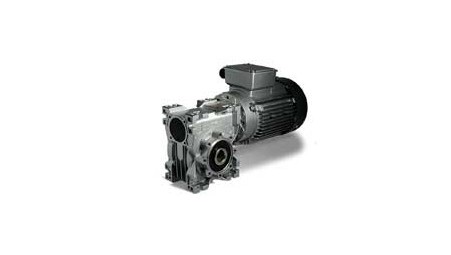

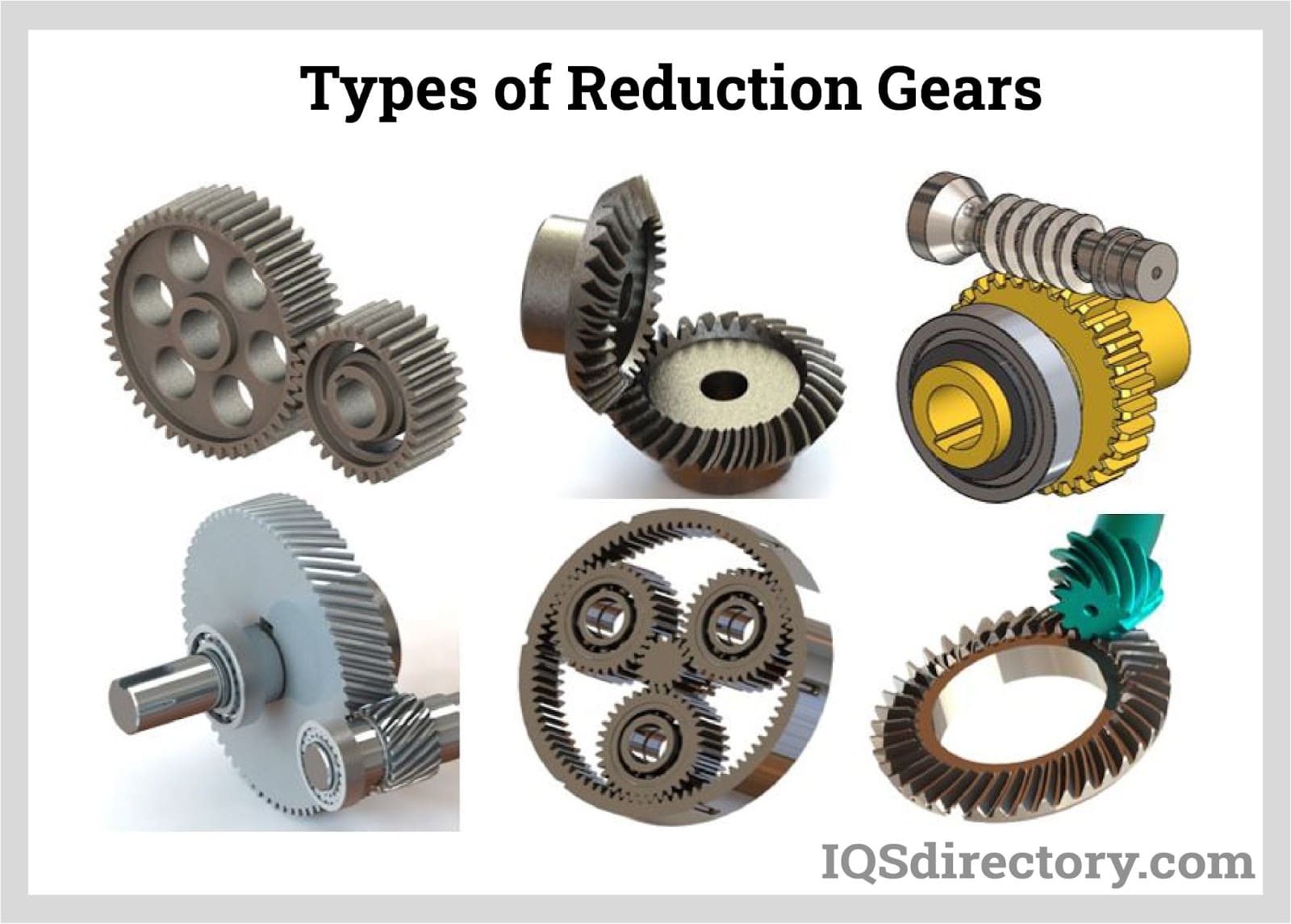
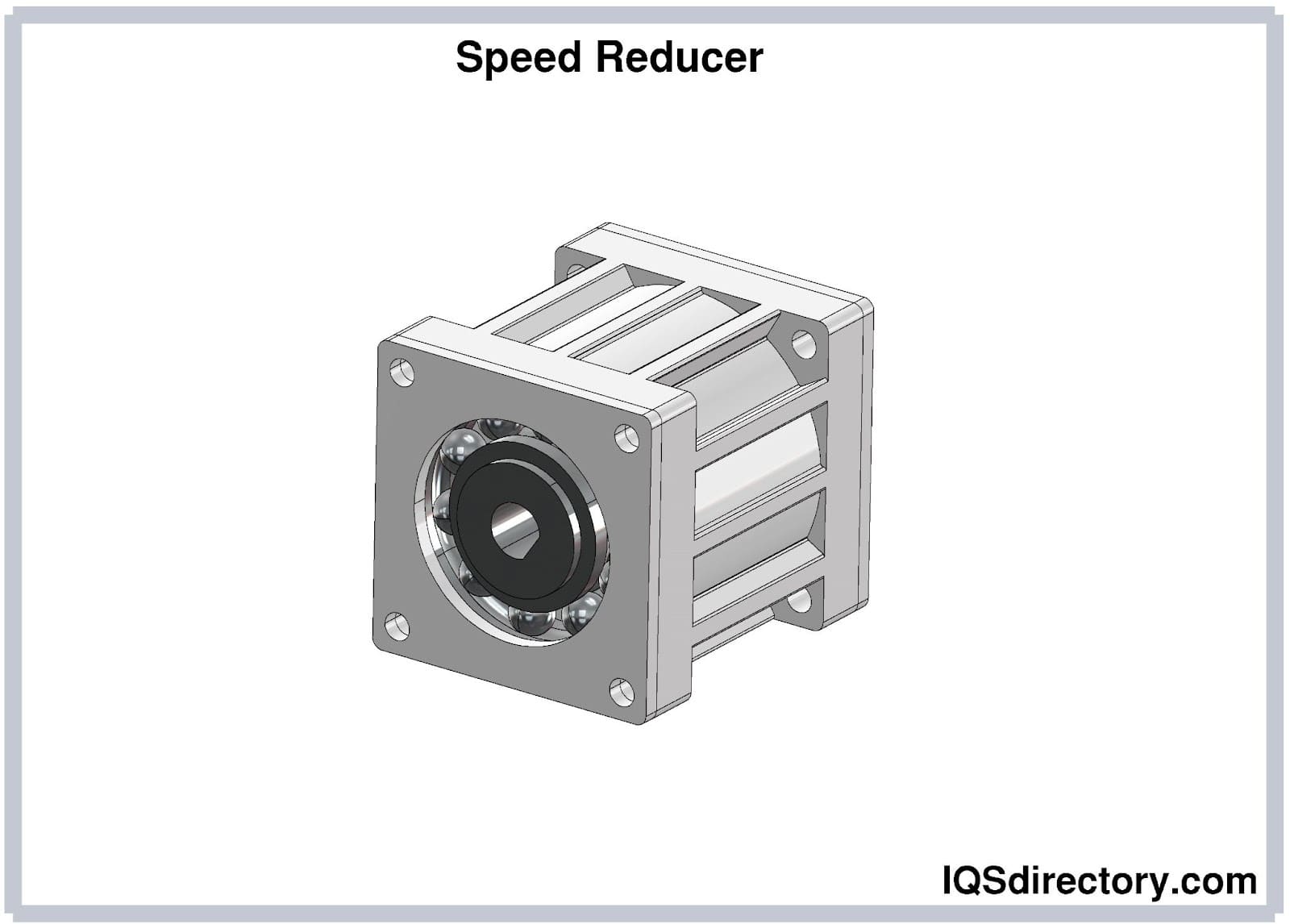
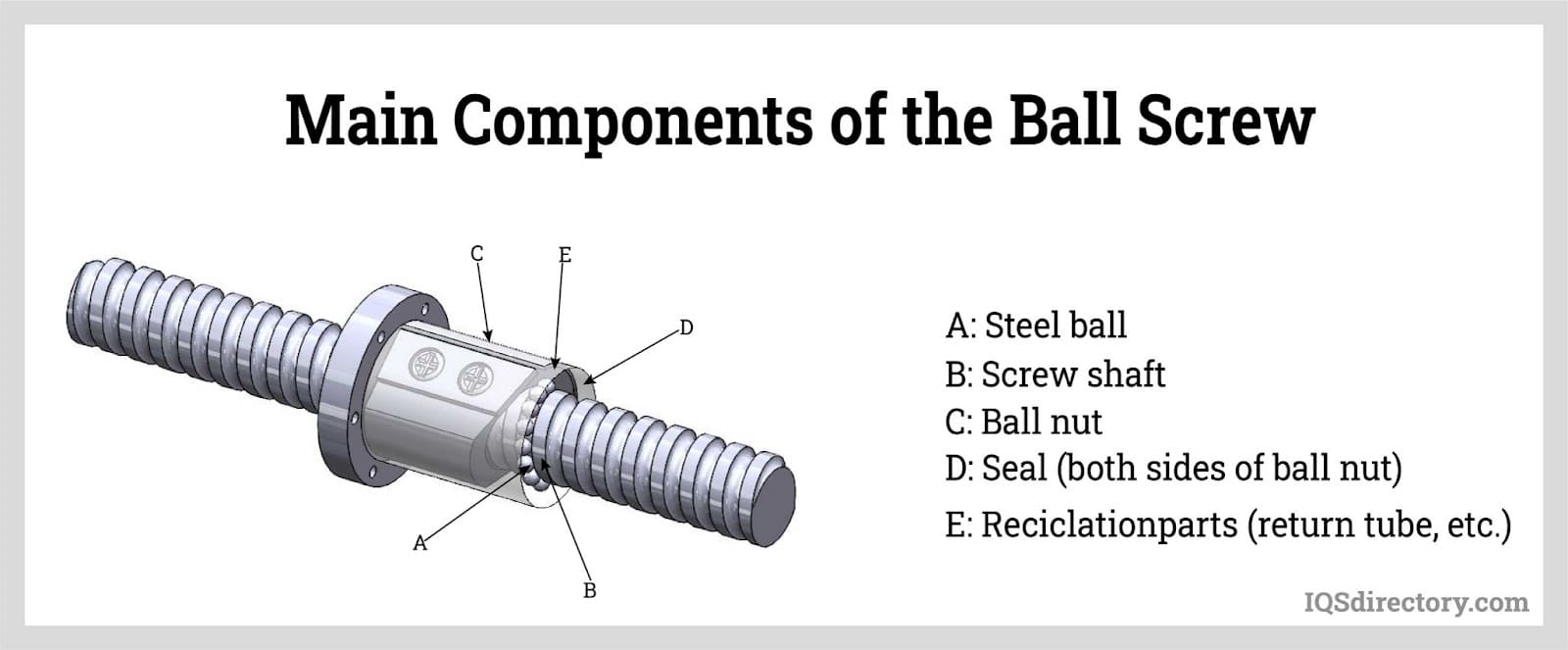
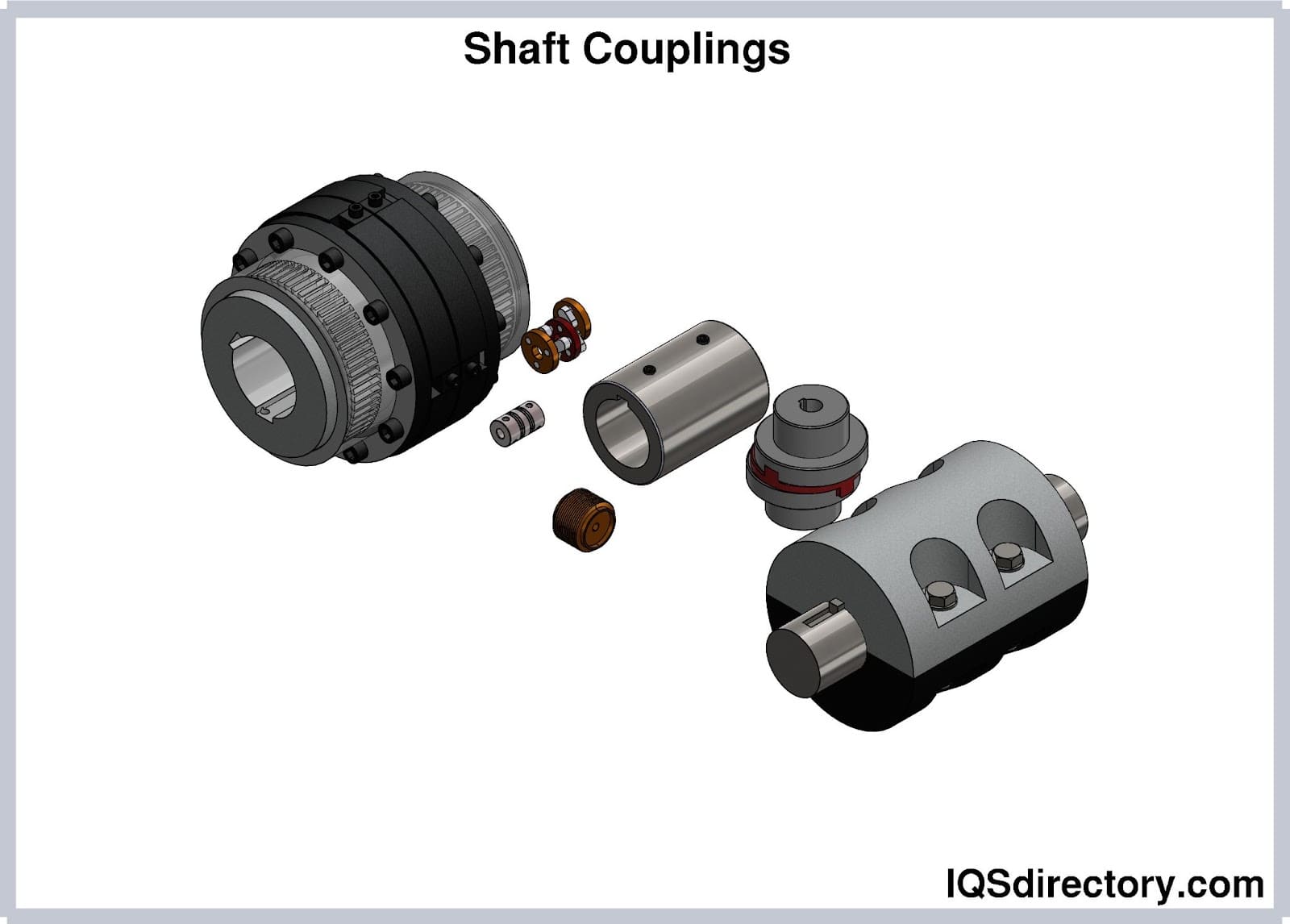
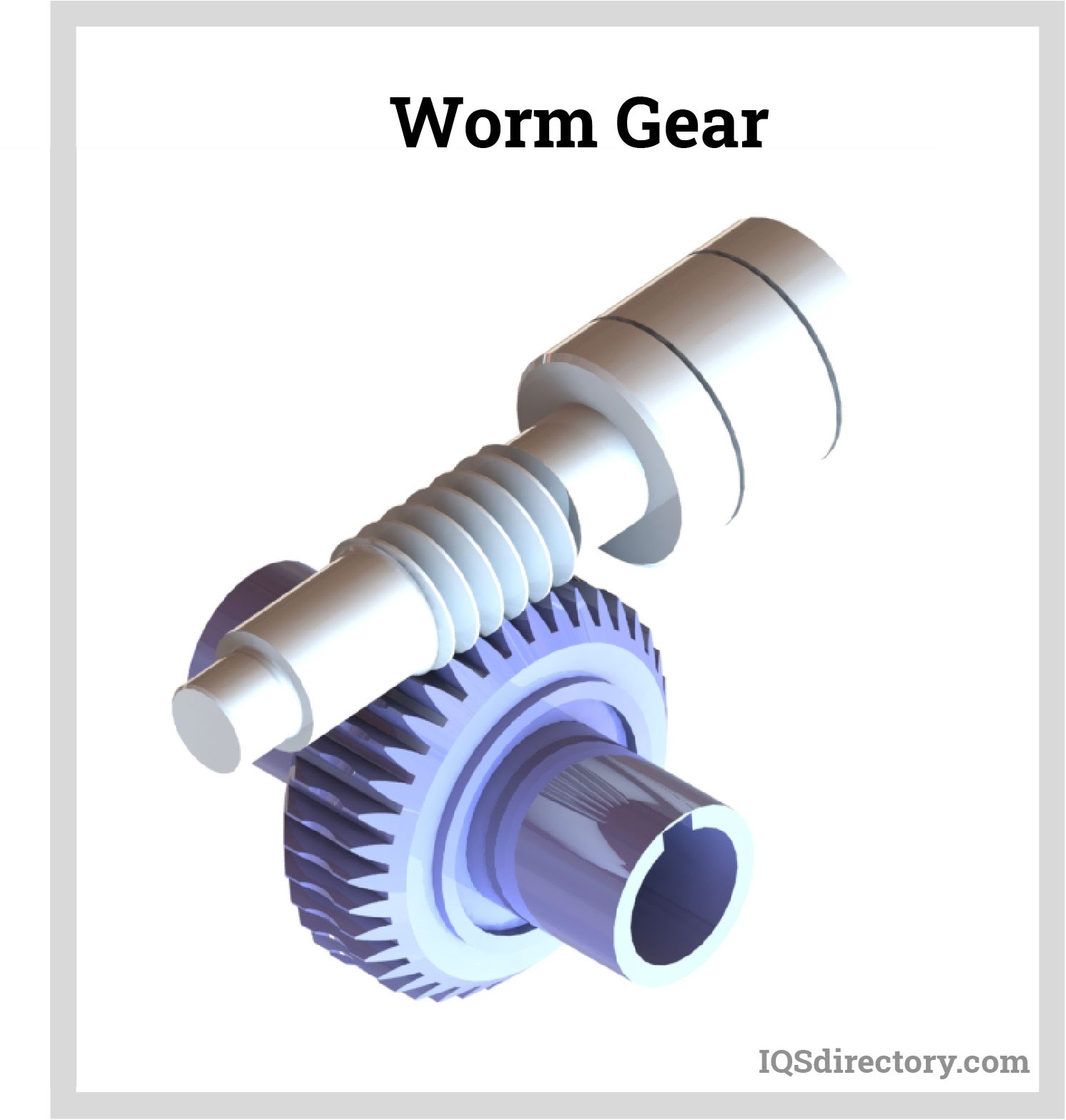
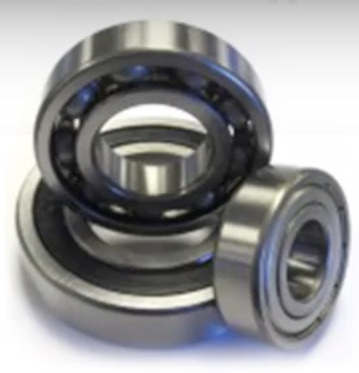 Ball Bearings
Ball Bearings Ball Screws
Ball Screws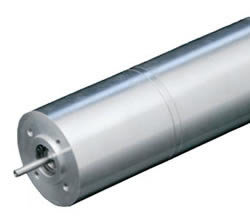 Electric Motors
Electric Motors Friction Materials
Friction Materials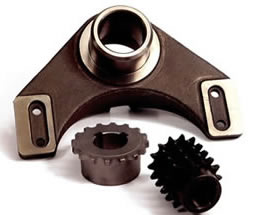 Gears
Gears Quick Release Couplings
Quick Release Couplings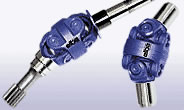 Shaft Couplings
Shaft Couplings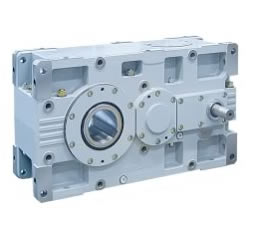 Speed Reducers
Speed Reducers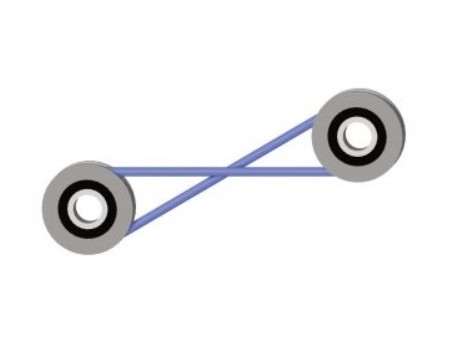 Timing Belting
Timing Belting Castings & Forgings
Castings & Forgings Bulk Material Handling
Bulk Material Handling Electrical & Electronic Components
Electrical & Electronic Components Flow Instrumentation
Flow Instrumentation Hardware
Hardware Material Handling Equipment
Material Handling Equipment Metal Cutting Services
Metal Cutting Services Metal Forming Services
Metal Forming Services Metal Suppliers
Metal Suppliers Motion Control Products
Motion Control Products Plant & Facility Equipment
Plant & Facility Equipment Plant & Facility Supplies
Plant & Facility Supplies Plastic Molding Processes
Plastic Molding Processes Pumps & Valves
Pumps & Valves Recycling Equipment
Recycling Equipment Rubber Products & Services
Rubber Products & Services